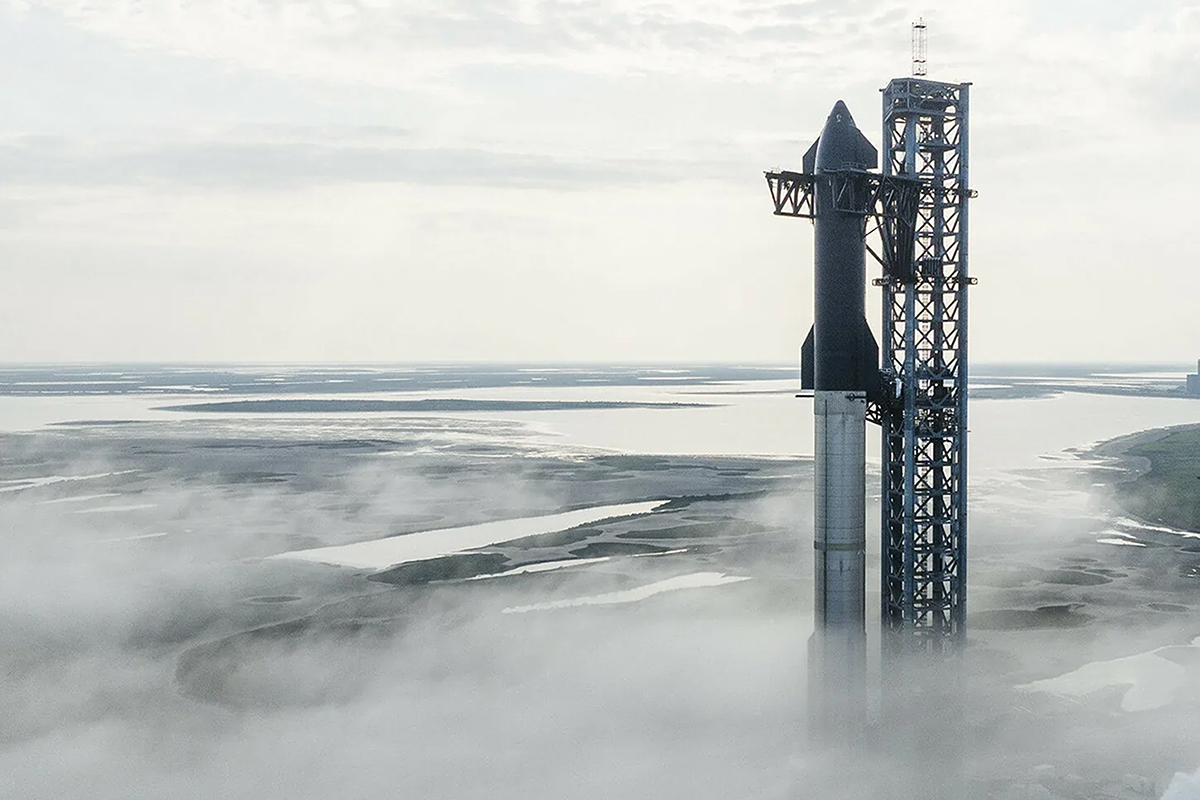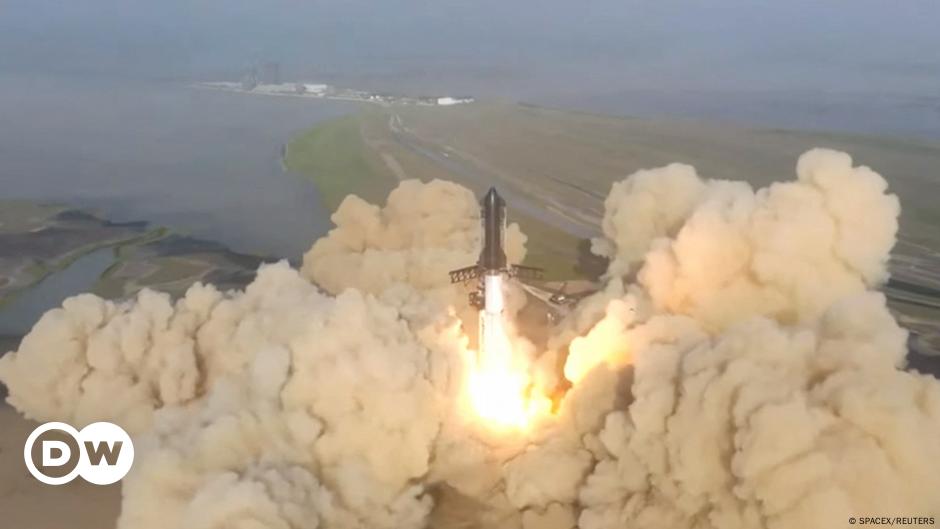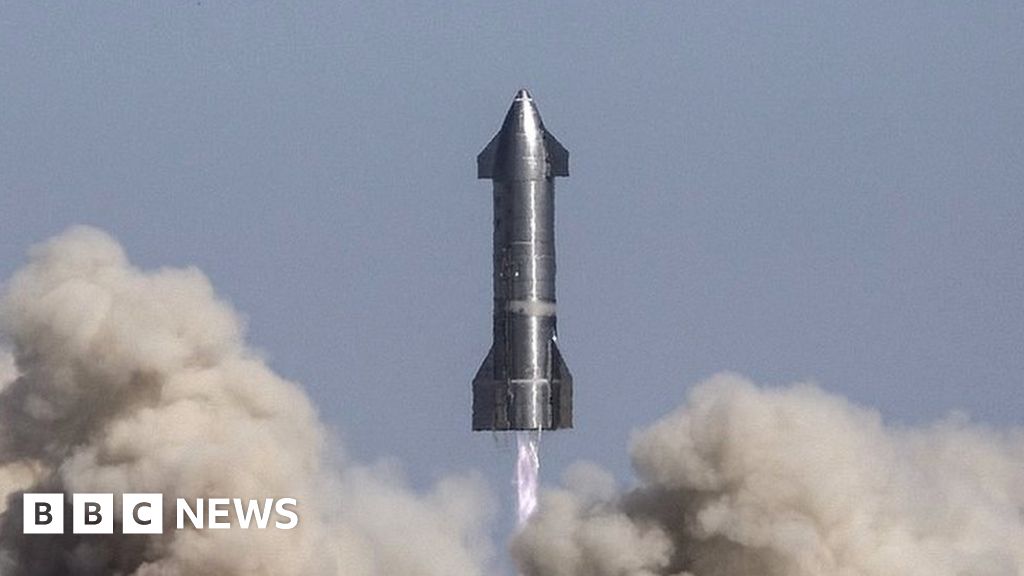#starship
One person like that
2 Comments
Published 8th September 2023 (14:10)
Source: https://youtube.com/watch?v=eLiVgvg0am0
#space
#India’s Chandrayaan-3 Goes Offline; #Starship Waiting To Fly? | This Week in #Spaceflight
One person like that
How much more money can SpaceX spend on Starship?
https://qz.com/how-much-more-money-can-spacex-spend-on-starship-1850395274
5 Likes
2 Comments
Fehlgeschlagener » #Starship «-Start
#Umweltverbände verklagen #US-Luftfahrtbehörde
Rauch, Feuer und umherfliegende Betonteile – nach der Explosion des »Starship« in der Nähe eines #Schutzgebiet -s in #Texas klagen #Naturschützer gegen die US-Luftfahrtbehörde. Sie fordern, #SpaceX die #Lizenz zu entziehen.
was ist mit dem ganzen sinnlos verbrannten Sprit?
One person like that
1 Comments
One person like that
1 Shares
4 Likes
3 Comments
On 4/20 my response to the Starship Launch was that I'm glad Musk's ego didn't kill or injure anyone. Watching this dissection of the launch sequence I see how much more realistic that possibility was and almost all of it was preventable. It wasn't just the lack of thrust diverters etc. at the launchpad. It was launching this without having command of the engine problems such that the vehicle was crabbing and listing almost immediately after take off. The self destruct system didn't even work! It just popped holes in the side. Thank god they didn't need to use it closer to the ground to prevent it flying into inhabited areas. Truly horrifying how glib he continues to be about this episode and how much people are still Staning for him about this event specifically and him in general. #ElonMusk #SpaceX #Starship #EngineeringDisasters #engineering #AerospaceEngineering #space
SPACEX - Starship Launch of 24/7 - A Cascading Failure
7 Likes
1 Comments
2 Shares
Still, the power of 28 Raptors got Starship high into the sky. There was a brief, bright flash from those engines about 33 seconds into the flight, though it's unclear if this indicated anything off-nominal. Starship kept climbing and made it through the Max-Q gauntlet in one piece at around T+80 seconds, eliciting cheers from SpaceX headquarters in Hawthorne, California, where employees had gathered en masse to watch the liftoff.
The next big milestones were supposed to occur back to back to back just under three minutes after liftoff: Super Heavy engine shutdown, followed by stage separation and the lighting of the upper-stage vehicle's six Raptor engines.
But this is where Starship faltered. The vehicle appeared to start performing a prescribed flip ahead of stage separation, Insprucker said during the webcast. But Super Heavy's engines continued to burn and the vehicle began to tumble, sparking moans of concern from the crowd at SpaceX HQ.
Stage separation never came. And Super Heavy's engines appeared to keep firing long past the targeted cutoff point, which was two minutes and 49 seconds after liftoff(opens in new tab).
The full-stack Starship kept tumbling for another minute or so before exploding three minutes and 59 seconds after launch, likely because SpaceX activated the vehicle's flight termination system at this point.
https://www.space.com/spacex-starship-first-space-launch-what-we-saw
9 Likes
5 Comments

Debris Rains Down on Protected Wildlife After Starship Explosion
#SpaceX's first orbital #Starship launch attempt saw the most powerful rocket ever built soar to new heights. But it likely came at a big cost to the #environment.
"Getting reports from multiple people now of 'particulates' raining down in areas of Port Isabel after the nearby explosion of the SpaceX rocket stack Starship/Superheavy," NPR reporter Pablo de la Rosa tweeted, accompanied by pictures of grit-covered surfaces.
Unfortunately, given the location of SpaceX's testing facilities near Boca Chica, Texas, local wildlife could feel the full brunt of the failure as well.
One person like that
3 Shares
SPACEX: Starship explodiert! Testflug von Elon Musks Großrakete gescheitert | WELT Thema
SPACEX: Starship explodiert! Testflug von Elon Musks Großrakete gescheitert | WELT Thema
https://youtu.be/DoBFOszw5cQ
http://redirect.invidious.io/DoBFOszw5cQ
#SpaceX #BFR #StarShip #RUD #TestFlug #Ulrich #Walter #WELT #RandomShit ;)
2 Likes
1 Comments
Starship-Riesenrakete explodiert nach dem Start | DW | 20.04.2023
Das hatte sich SpaceX-Chef Elon Musk wahrscheinlich anders vorgestellt: Sein 120 Meter hohes Raketensystem Starship - die weltgrößte Rakete - explodierte, als sich die Antriebsstufe von der Raumfähre trennen sollte.#USA #Texas #Starship #Rakete #SpaceX #Explosion #ElonMusk
Starship-Riesenrakete explodiert nach dem Start | DW | 20.04.2023
One person like that
3 Likes
Morgen soll das #Starship seinen ersten (nahezu) orbitalen Testflug haben. Sollte das gelingen, wäre dies die größte Rakete, der das jemals gelungen ist - Es ist aber nicht unwahrscheinlich, dass etwas schieflaufen wird.
Starship gets FAA approval - but what exactly is Elon Musk's space vehicle?
2 Likes
5 Comments
1 Shares
#Music on #Blue-Spectral-Monkey
#CraigChaquico 9/26/1954 #Birth Jefferson #Starship
https://www.youtube.com/watch?v=7m8izf-oXY4
#JeffersonStarship - #Miracles (Official Audio)
2 Likes
2 Likes
1 Shares







